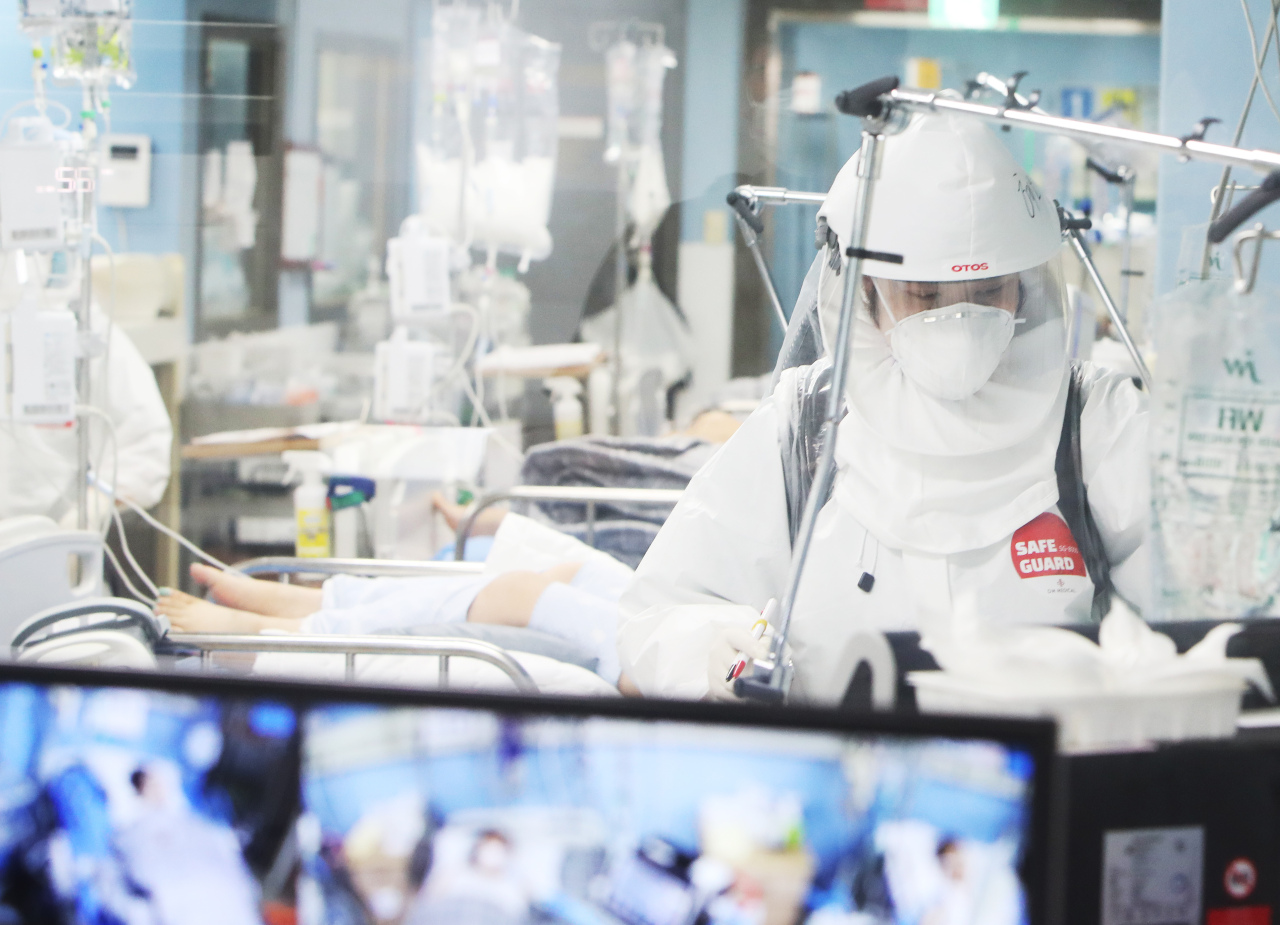South Korea’s fourth wave of COVID-19 is far from reaching its peak and intensive care units equipped to handle COVID-19 patients are rapidly filling up, the authorities warned Friday. Unlike in past waves, those in critical condition are mostly under the age of 60.
The Korea Disease Control and Prevention Agency’s deputy chief, Kwon Jun-wook, told a briefing Friday that Korea was facing its largest, and possibly its longest, surge in infections and it was still “far from peaking.”
He said that there was still “a long way to go before reaching the peak” of the current wave. “We’re still in the middle of an upward trajectory,” he said.
After a month of the most restrictive social distancing rules failed to rein in the virus, Korea decided to leave the rules in place in and around Seoul for another two weeks until Aug. 22. Under the measures, social gatherings of more than two people are banned past 6 p.m.
Kwon said the restrictions were necessary to prevent a hospital capacity crisis.
“I worry that patients may not be able to receive care in time as our health care systems become overwhelmed,” he said.
“A growing number of patients are filling up our intensive care beds, and deaths may increase in sync with the increase in hospitalizations,” he said.
“There is no other way to turn this around than compliance with public health rules and speedy vaccinations.”
The Korean Society for Thoracic & Cardiovascular Surgery said in Thursday’s statement that the number of patients on an advanced form of life support called extracorporeal membrane oxygenation, or ECMO, was at an all-time high and still rising.
The rise in the use of ECMO, a last resort for the sickest patients when even ventilators aren’t enough, was a “key indicator” of the pandemic’s severity, the society said. Critical capacity at hospitals in and around Seoul was already stretched thin, the society said, calling for additional staffing and equipment.
“Unlike before, it is younger patients who are mostly getting very sick now, which once again reminds us why COVID-19 has to be taken seriously,” the society said.
By Thursday’s end, 376 patients were fighting for life on respirators or other mechanical support -- the highest number since the winter surge in December and January, which mostly affected nursing homes and residences for seniors.
More than 62 percent of critically sick patients were under 60. More specifically, 133 or 35 percent were in their 50s, 58 or 15 percent in their 40s, 35 or 9 percent in their 30s, and six people or 1 percent in their 20s. Two people were younger than 19.
The agency said earlier this week that in the last two months, 99 percent of severely or critically ill patients younger than 60 were not vaccinated.
Currently there are around 10 million doses of COVID-19 vaccines remaining in Korea: 4 million AstraZeneca doses, 5 million Pfizer doses, 342,000 Moderna doses and 100,000 Johnson & Johnson doses.
Some 28.6 million doses of vaccines from AstraZeneca, Pfizer and Moderna are set to arrive here over the month of August.
Under the age-based plan, people in their mid- to late 50s became eligible for their first vaccinations last week. For those younger than 50, eligibility opens up Aug. 26.
Since the national rollout began on Feb. 26, 40 percent of Korea’s 51 million people have received at least one dose of a vaccine, while 14 percent have been fully vaccinated. The aim is to deliver first doses to 70 percent of the population before Chuseok, a national holiday that falls Sept. 18-22.
Korea counted 1,704 more cases on Thursday, bringing the cumulative tally to 207,406. Over the past week an average of 1,515 cases were posted each day.
By Kim Arin (
arin@heraldcorp.com)







![[Today’s K-pop] Blackpink’s Jennie, Lisa invited to Coachella as solo acts](http://res.heraldm.com/phpwas/restmb_idxmake.php?idx=644&simg=/content/image/2024/11/21/20241121050099_0.jpg)
